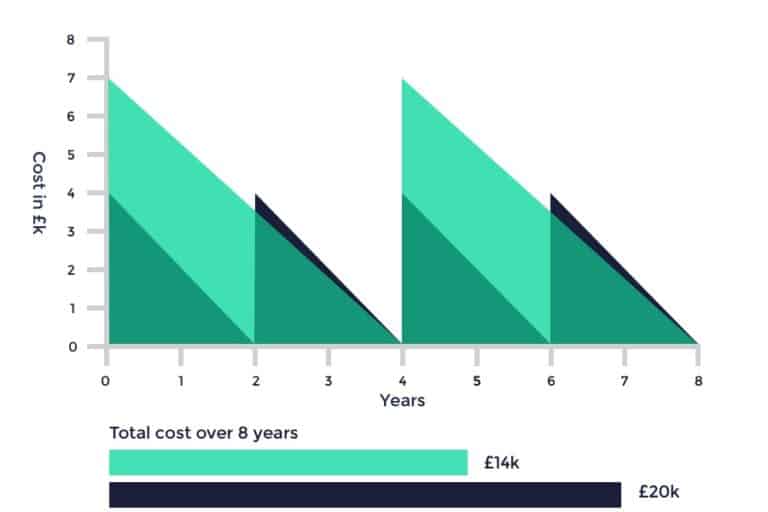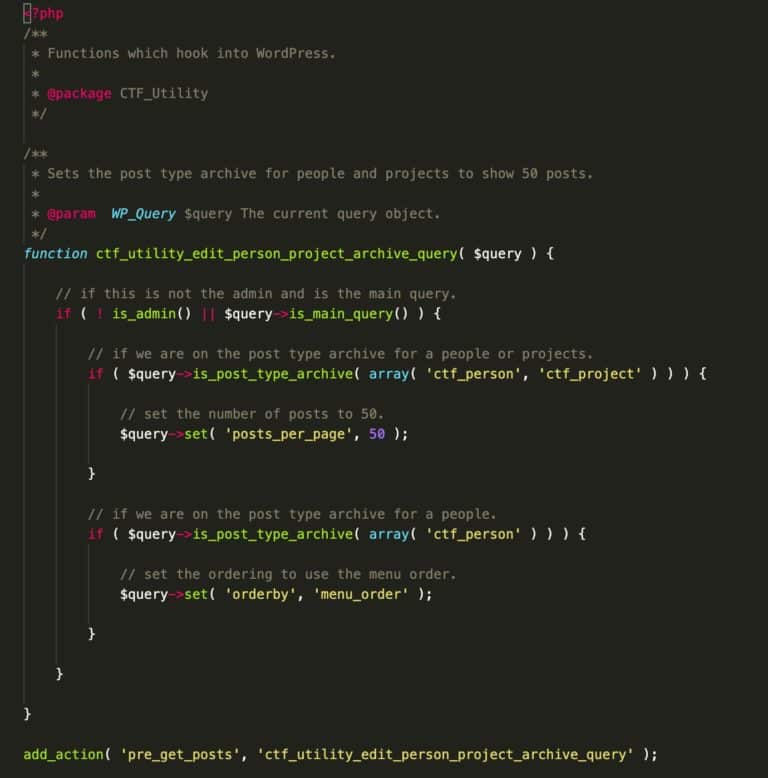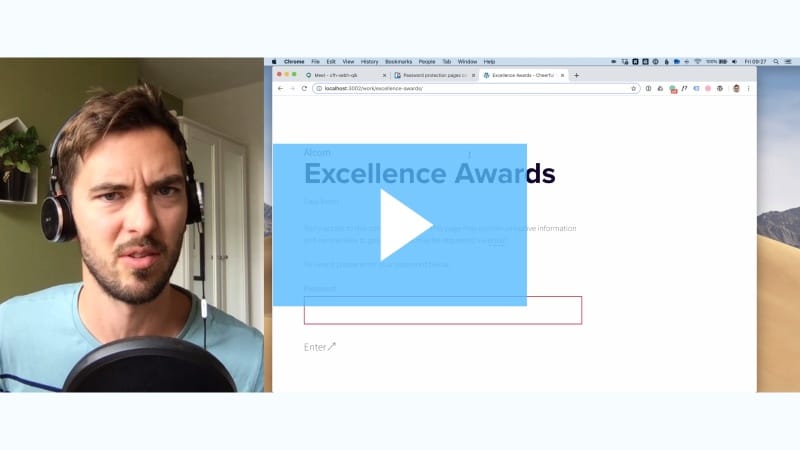How to build WordPress websites that last
Written by on August 3, 2020
How do you build a WordPress website that lasts, is robust and will adapt and grow with your business? In this article we will outline the ways in which Highrise Digital deliver WordPress websites for our clients that last.

Introduction
If you’re commissioning a new website it’s probably going to be a significant investment for you and/or your business.
How long that website lasts has a direct impact on the project’s return on investment.
At Highrise Digital, we’ve been developing WordPress websites for over a decade.
In that time we have learned how to create WordPress websites that stand the test of time and provide a better return on investment for our clients.
In this article, I outline how to build WordPress websites that last, are more flexible going forward and that gives you real value for money.
Why is it important to build sites that last?
If you invest £4k at a time for websites that last for 2 years, in 8 years you’ll have invested £16k.
But if you invest £7k for websites that last for 4 years, you’ll have invested £14k.

These numbers are made up, but they demonstrate that the initial price of a project doesn’t necessarily reflect it’s cost over time.
This model doesn’t take maintenance into consideration either. As well as lasting longer, a well-built website will be cheaper to maintain.
Think about buying a car.
We agonise over the potential longevity and maintenance costs of cars because we understand that higher prices can mean higher quality and lower maintenance costs.
In the same way, you want your car to last you more than a couple of years, you want your website to do the same.
We believe that it is important to build every site to last as long as possible for 2 main reasons.
- Provide a better return on investment (ROI)
- Allow the website to more flexible in the future, to grow and adapt as your business grows
Better ROI
A website is an investment.
You invest a certain amount of money into developing a website to meet certain goals. If these goals are met, it is expected that the website will generate a return on that investment. Maybe that is the sale of products, getting more followers or enquiries for example.
Often, investing a little more time and money at the start of a project can lead to a more cost effective website over the course of its lifetime.
Back to the car analogy.
In the sales showroom, you see Car A, priced at £1000. However, it is obvious from the condition that the car is not going to last more than another 12 – 18 months.
Car B is £2500, but it is clear that this car is going to last a lot longer, most probably 4 or 5 years.
In this example, it makes sense that car B gives a better return on investment as it only costs you £500 per year. Car A, on the other hand, costs £1000 per year.
Often this is the same with websites. A site that is built to last, may cost a little more upfront, but you get more return on your investment because the site will last significantly longer.
A website that grows and adapts to your business
Your business is constantly evolving and changing and this means that your website should have the ability to do the same.
You don’t want to be stuck with a website that is holding back your business.
- Example 1: A marketing team that can’t create landing pages because the CMS is too hard to use.
- Example 2: A recruitment website that doesn’t list up to date jobs because they can’t integrate with their job software.
- Example 3: A sales team that is missing out on leads because there is no CRM integration with the website.
Adding new features and functionality to your website is much easier if the website has been built with ‘extensibility’ in mind from the start.
Using professional development practices and avoiding shortcuts at the start will mean that future improvements and changes should be quicker and cheaper to implement.
How to build WordPress websites that last
Hopefully, you’re convinced that a longer-lasting website is better for your business. So, how do you actually build a WordPress website that will stand the test of time?
- Planning
- Documentation
- Code quality
- Using trusted 3rd-party tools
- Project management
- Maintenance and updates
Planning
The first, and perhaps most important step to create a WordPress website that will last well into the future, is to plan. The old saying goes that if you fail to plan, you are planning to fail.
If you fail to plan, you are planning to fail.Benjamin Franklin
Effective planning means that potential threats/risks and opportunities to the project can be discovered early so that they can be mitigated or taken advantage of.
For example, if you know that in a years time you’ll want to add a multilingual capability to your site – it might save time and money in the future to keep that in mind during the current project build.
An important part of any planning phase is asking lots of questions.
Questions
At the start of a project, it is really important to know as much about the project as possible.
The key questions include:
- What do you want to build?
- Why do you want to build it?
- What are the goals of the project?
- How will we know whether the new website is a success?
A good development team will ask a lot of questions. Even seemingly simple features can have deep, hidden complexity.
Experienced developers will know this and will dig into every aspect of the project to root out any false assumptions, hidden requirements and potential hurdles.
For larger projects, these questions are often part of a ‘Discovery project’ where a consultant will help you to take your ideas and turn them into a solid project brief that can be handed to a development team to implement.
⚠️ Be wary of developers/teams who will accept a project (and worse, give a price) without interest in the details. Such projects are based on assumptions, rather than facts.
Taking the time to ask and answer questions at the start will pay for itself many times over throughout the project and the lifespan of the website.
A Plan for success
Based on the answers to questions about the project, a plan can be developed that can provide sound advice and guidance on what you need to deliver your goals.
This could take the form of a top-level project brief, or a much more detailed technical specification (or both) – depending on the project size and scope.
☝️ Do you want to get your project off to the best start? A ‘Project Discovery’ phase will help you to form a clear plan for success.
Documentation
To make sure that a project is going to last, good documentation is crucial. It enables current, and future, stakeholders to reference what decisions were made and why.
These can be decisions about what features to include, which browsers to support, which software to use, design decisions, etc.
There is reasoning and rationale behind decisions that can get lost or confused over time.
There are two sides to a well documented project:
- Site owner/manager documentation
- Developer documentation
There is a lot of cross-over here, particularly during the project development, when it’s important that decisions made during calls or in emails are documented so that all parties are aware of decisions and why they were made.
Web project documentation will tell you:
- What is going to be built
- How it is built
- Why it is built
- How to use it
Documentation can take many forms, including:
- Project specification
- Project/task management software
- Wiki’s and handbooks
- Video guides
- In the project’s code base as comments (see below).
Inline code documentation
Often neglected but critically important, commenting code allows the developer to explain what the code is attempting to do.

Comments inform any future developer of the intended purpose of the code. This can speed up tasks that are carried out in the future, lengthening the lifespan and decreasing cost of ownership of the project.

Videos
A video screencast is often both quicker to produce and more effective for users to follow than written documentation.
It is also something that users can refer back to when editing the website and can be shared with content editors working on the website in the future.
Quality code
A website is going to last longer when it is built using a quality code base. Writing efficient, performant code is important to a successful website project which is going to last.
For WordPress projects, we think quality code takes 3 forms.
Extensible code
Extensible code means writing code that can be extended, built upon and modified easily in the future without breaking the site or rewriting the codebase.
This is important as websites are always changing to evolve with changing times and changing business needs. Coding extensively from the beginning means changes can be made much more easily.
🎥 Watch Mark talk about extensible coding at the WordPress Cheltenham meetup below
Best practice secure coding
WordPress provides a lot of features built in to help developers write secure code.
This includes (but is not limited to):
- Always serving websites over SSL – using HTTPS to make sure that traffic between the web server (host) and the user (client) is encrypted
- Sanitizing all data inputs before they are saved to the WordPress database. This removes any harmful data from being saved.
- Escaping all data before it is output on the website. This removes the risk of running code that could be harmful to the user or the website.
- Forcing all users to use a strong password for their user accounts.
- Using the latest version of PHP (the language in which most of WordPress is written in). This not only improves security but also speeds up the website.
- Making sure that WordPress, any plugins being used and themes are always kept up to date with the latest patches.
Robust backup and restore procedures should the worst happen.
Doing things “The WordPress Way”
WordPress code is written using a set of coding standards. These standards are written to make sure that code is written in the same way.
Using code standards makes the code:
- Easier to read and understand.
- More stable and robust.
- More secure.
WordPress also has a lot of built-in functions which developers can use in order to take advantage of a number of things that developers would not get if they wrote their own code from scratch.
For example, WordPress has a great set of functions (actually classes) for querying posts from the database. It makes sense for developers to use these functions rather than their own because they take the advantages of built-in features such as caching.
Additionally, WordPress, on the whole, is built to be backward compatible. This means using the WordPress methods will mean your code will stand the test of time for future versions of WordPress.
Tried and tested 3rd party tools
The wealth of 3rd-party solutions is a key part in the success and growth of WordPress.
Plugins are pieces of software that ‘plug in’ to WordPress to extend its functionality.
Using WordPress, and installing plugins, gives you a huge head start on the development process, and can sometimes mitigate the need for any custom development at all.
With some more complex functionality, for example a form builder, it makes sense to use a tried and tested 3rd party solution rather than developing something specific for the project. This is because the cost savings outweigh any negatives of using a 3rd party tool.
However, because anyone can produce a plugin for WordPress, many of the 3rd party solutions are less than ideal. Some are unsupported, not maintained and are poorly written.
To get the best out of WordPress plugins:
- Popular plugins are often a safer bet.
- Make sure that it is actively maintained and compatible with the latest version of WordPress.
- Look at the reviews.
- Look at the support forums, are questions answered and issues solved promptly?
- Use plugins with a narrow feature-set where possible – this helps to limit the code bloat.
- Keep your plugins up to date.
- Don’t modify plugin code.
☝️ At Highrise Digital we always choose tried and tested 3rd party solutions which we know are well-written, kept updated and have excellent support available. In addition, we only choose 3rd party solutions where they can be safely extended and modified so that we can meet the clients needs exactly.
Project management
Project management might not seem directly related to making sure that a website lasts, however it is an important part of a successful project.
Poor project management is one of the main reasons a project can fail and if the project fails then we have not delivered a WordPress website that is going to last.
We believe that good project management comes down to:
- Setting clear goals.
- Turning assumptions into assertions.
- Open, honest and frequent communication.
- Creating and maintaining documentation.
- Managing and mitigating risks.
Project management tools
There are thousands of potential project management tools to choose from. The best will depend on the project team’s collective culture and experience, as well as the type and size of the project itself.
☝️ Find out how Highrise Digital uses Trello to successfully manage their projects.

Maintenance and updates
I have left this until last, however it is potentially the most important.
Like a car, a website needs constant maintenance. Without it, the website not only becomes slow and hard to use, but potentially becomes vulnerable to security issues.
In addition to maintenance, software updates are constantly released for WordPress including plugins, themes and WordPress core itself.
These updates are important to keep your website as secure as possible and it is therefore important to have these applied as quickly as possible and to test they work without breaking the website.
☝️ Highrise Digital always offers our customers a monthly support plan so that we can keep the site updated, carry out any maintenance necessary and provide the necessary support and consultancy.
Conclusion
When making an investment of any kind you want to maximise the return.
With a website, by taking steps to ensure it’s longevity, you can significantly increase your ROI, as well as avoid embarrassment and months of wasted time.
It pays in the longer term to invest in the longevity of your website.
At Highrise Digital we take this very seriously.
We go further than just delivery, we make sure that:
- what we build is going to last for years to come
- it is robust enough to be flexible when it needs to be
- it is not going to break when it gets updated.
Do you need a WordPress website that will stand the test of time? Then please get in touch and we can have a chat. 👋